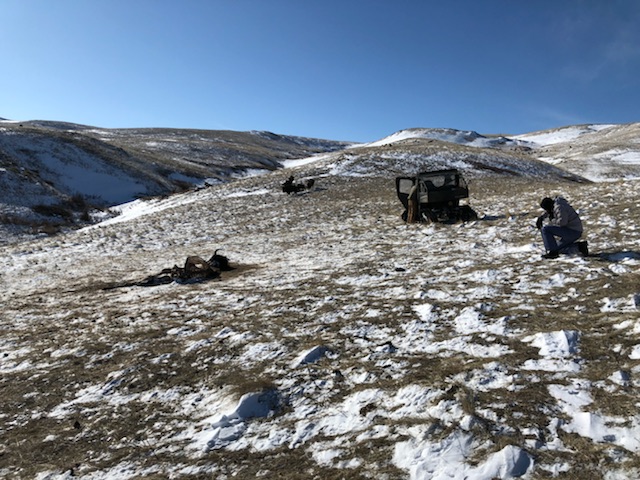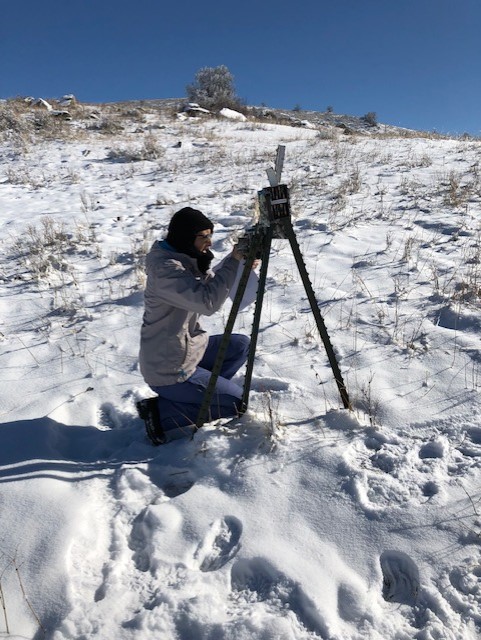
The latest publication led by SEER Lab #MedGeo M.S. Alum, and full-time Spatial Epidemiologist Morgan Walker is available in Royal Society Open Science. In this study, Walker and others examined how ungulates, primarily plains bison and elk, use animal carcasses on the Montana landscape. Working with SEER Lab partners at Turner Enteprises, Inc. (TEI) out of Bozeman, we deployed motion capture cameras, camera traps, pointed at carcasses found by TEI Biologist and co-author Valpa Asher. For each carcass found, a camera was positioned to capture the carcass in the in the center of the field of view, while a second camera focused on the same type of landscape with no carcass in view. Over a three year period, Morgan Walker and #MedGeo undergrad Alum and SEER Lab GIS Technician Maria Uribasterra cataloged nearly 800,000 photos to determine the time of arrival and ungulate species, as well as the behaviors observed, such as feeding/grazing, passing through, inspecting the carcass, or dominance displays. The goal of this effort was to determine if elk and bison are more likely to graze at carcass sites than at comparable habitat without carcasses. Anthrax is a zoonotic disease caused by a spore-forming bacterium, Bacillus anthracis, which can survive in the bones of the carcass and surrounding soils. The soil conditions may determine both grass quality in future time periods and appropriate conditions for the spores to survive; as part of this study we also measured plant biomass and soil conditions showing biomass and some mineral content is higher at carcass sites than surrounding areas. These carcasses may serve as locally infectious zones, or LIZs, and have been confirmed to play this role in Etosha National Park, Namibia. This study in Montana showed that male and female elk use LIZs differently, with males more like to graze/forage and display dominance. Interestingly, in previous SEER Lab studies we have shown male elk have higher serological exposure evidence of anthrax in the population and more males died in a major outbreak in the study area in 2008. These results suggest LIZs are a likely transmission route for anthrax and they serve as a resource for grazing elk and bison throughout the year.

This study was collaborative effort with long-time SEER Lab partners, Dr. Sadie Ryan from Geography’s QDEC Lab, Dr. Jose Miguel Ponciano – UF Biology, and Dr. Wayne Getz from UC Berkeley. All were Co-Investigators with Dr. Jason Blackburn on an NIH Ecology of Infectious Diseases (EEID) award to study anthrax transmission and animal behaviors in Montana and Etosha. SEER Lab has maintained a running study of anthrax at the site since 2008.